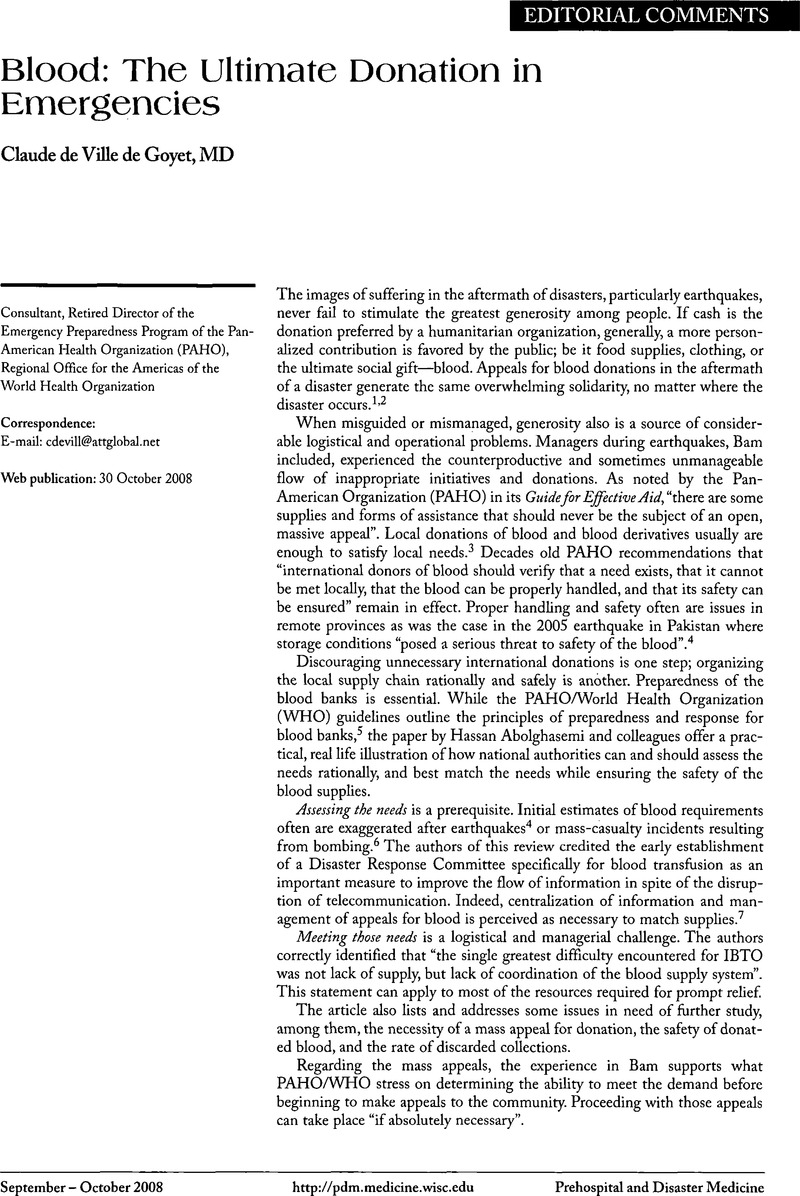Crossref Citations
This article has been cited by the following publications. This list is generated based on data provided by Crossref.
Liu, Jing
Huang, Yi
Wang, Jingxing
Bi, Xinhong
Li, Julin
Lu, Yunlai
Wen, Xiuqiong
Yao, Fuzhu
Dong, Xiangdong
He, Weilan
Huang, Mei
Ma, Hongli
Mei, Heili
King, Melissa
Wright, David J.
Ness, Paul M.
and
Shan, Hua
2010.
Impact of the May 12, 2008, earthquake on blood donations across five Chinese blood centers.
Transfusion,
Vol. 50,
Issue. 9,
p.
1972.
Tabatabaie, Morteza
Ardalan, Ali
Abolghasemi, Hassan
Naieni, Kourosh Holakouie
Pourmalek, Farshad
Ahmadi, Batool
and
Shokouhi, Mostafa
2010.
Estimating Blood Transfusion Requirements in Preparation for a Major Earthquake: The Tehran, Iran Study.
Prehospital and Disaster Medicine,
Vol. 25,
Issue. 3,
p.
246.
Zhou, Yanfeng
Poon, Patrick
and
Yu, Chunling
2012.
Segmenting blood donors in developing countries.
Marketing Intelligence & Planning,
Vol. 30,
Issue. 5,
p.
535.



